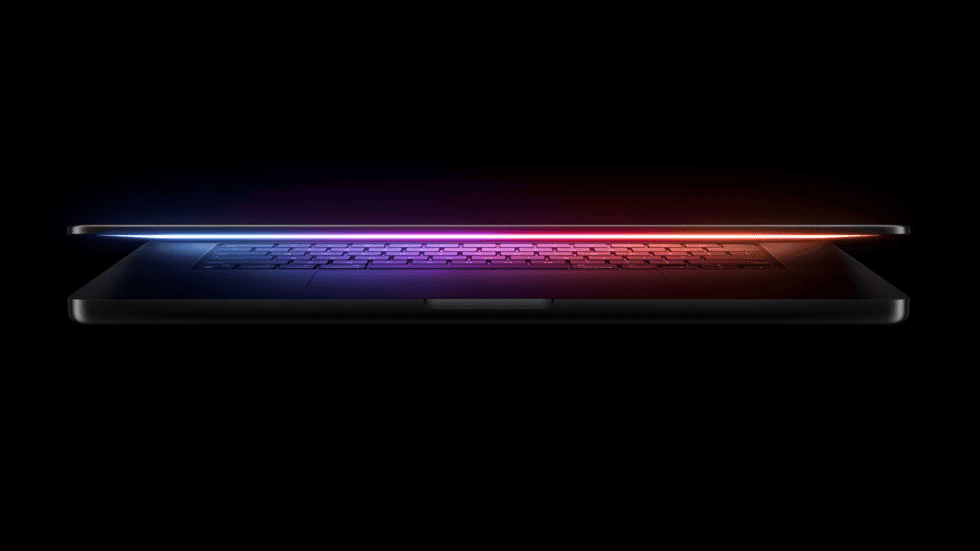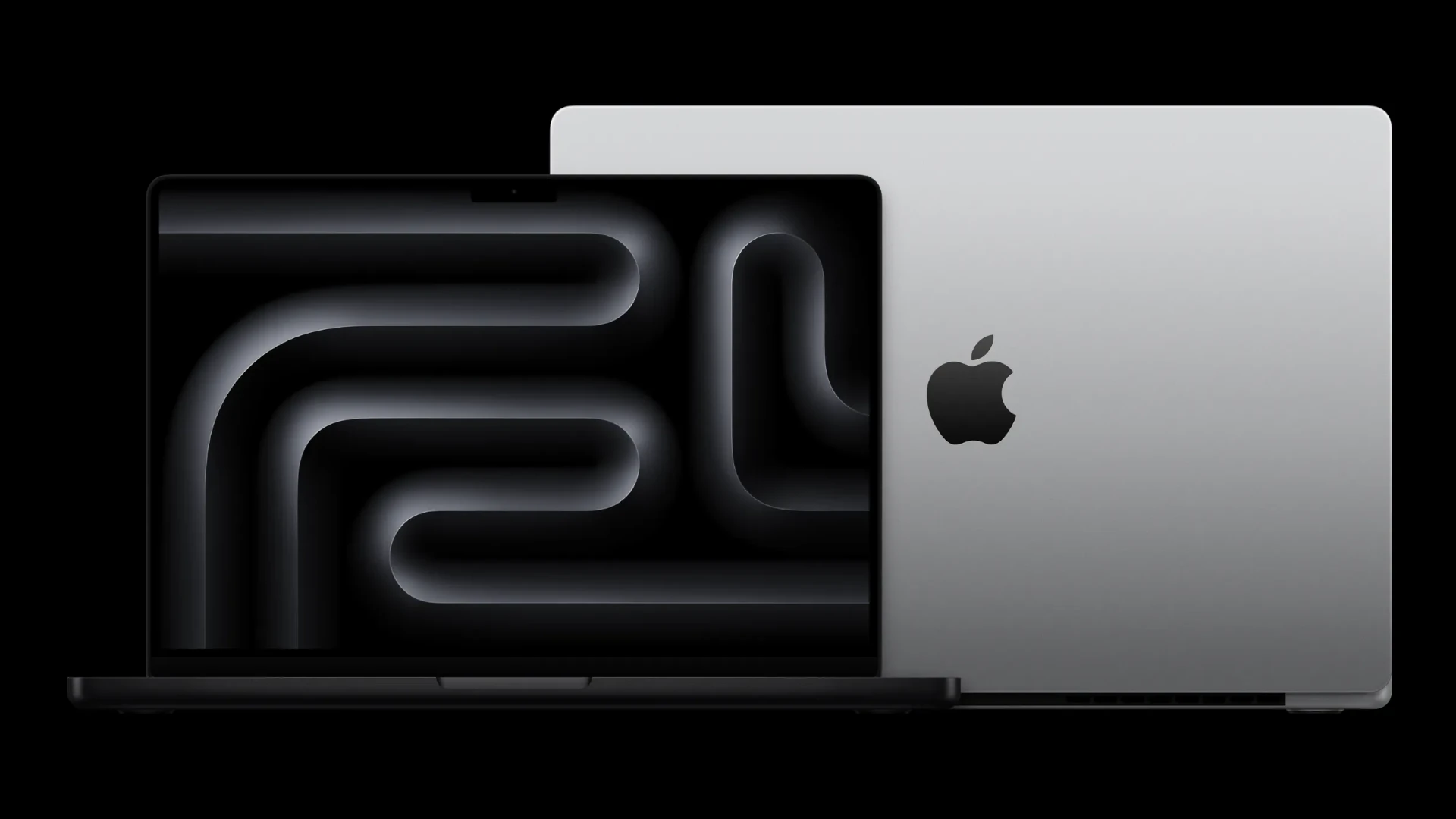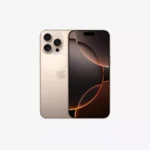Apple has quietly introduced a significant display upgrade to the new M4 MacBook Pro. The company has adopted quantum dot technology for the first time in its laptop screens. This change enhances color accuracy and brightness, offering users a more vibrant visual experience.
The quantum dot film replaces the previously used red KSF phosphor film in the MacBook Pro’s Liquid Retina XDR display. This technological shift marks a departure from Apple’s past approach, which favored KSF solutions due to their efficiency and lack of cadmium. The move to quantum dots suggests Apple has found ways to address previous concerns while leveraging the benefits of this advanced display technology.
Display industry analyst Ross Young first reported this unannounced feature. The inclusion of quantum dots in the M4 MacBook Pro’s screen aligns Apple’s laptops with cutting-edge display technologies used in high-end televisions and monitors. This upgrade demonstrates Apple’s commitment to enhancing visual quality across its product line.

M4 MacBook Pro Display Upgrade: A Quantum Leap
Apple has reportedly upgraded the display on its M4 MacBook Pro models. The new display uses Quantum Dot technology. This technology should make the colors on the screen more vivid and realistic. It should also improve the brightness and contrast of the display.
What is Quantum Dot Technology?
Quantum Dot technology uses tiny nanocrystals to produce different colors of light. These nanocrystals are much smaller than traditional LCD pixels. This means they can produce more accurate and vibrant colors. Quantum Dot technology is already used in many high-end TVs.
Benefits of the New Display
The new Quantum Dot display should offer several benefits for MacBook Pro users:
- More vibrant colors: The display should produce a wider range of colors. This will make images and videos look more realistic.
- Improved brightness: The display should be brighter than the previous model. This will make it easier to use outdoors or in bright light.
- Better contrast: The display should have better contrast. This will make blacks look deeper and whites look brighter.
- Increased energy efficiency: Quantum Dot technology can be more energy efficient than traditional LCD technology. This could lead to longer battery life for the MacBook Pro.
Release Date and Availability
Apple has not yet officially announced the new MacBook Pro models with Quantum Dot displays. However, they are expected to be released in the near future. The new displays are expected to be available on both the 14-inch and 16-inch MacBook Pro models.
Comparison Table
| Feature | Previous Display | Quantum Dot Display |
|---|---|---|
| Technology | Traditional LCD | Quantum Dot LCD |
| Color Accuracy | Good | Excellent |
| Brightness | Good | Excellent |
| Contrast | Good | Excellent |
| Energy Efficiency | Good | Excellent |
It seems Apple is not content with resting on its laurels. The rumored upgrade to a Quantum Dot display for the M4 MacBook Pro is a significant step forward, promising a visual experience that’s richer and more immersive. This move shows Apple’s commitment to staying at the forefront of display technology.
Key Takeaways
- Apple quietly upgraded the M4 MacBook Pro with quantum dot display technology
- The new display offers improved color accuracy and brightness
- This change aligns MacBook Pro displays with advanced screen technologies in other devices
Evolution of MacBook Pro Displays
MacBook Pro displays have undergone significant improvements over the years. Apple has consistently pushed the boundaries of screen technology to deliver better color accuracy, brightness, and energy efficiency.
From OLED to Quantum Dot Technology
Apple’s journey with display technology has seen a shift from traditional LCD to more advanced options. While OLED screens were long rumored for MacBook Pros, Apple instead opted for mini-LED technology in recent models. The latest M4 MacBook Pro takes this a step further by incorporating quantum dot technology.
Quantum dots are tiny semiconductor particles that emit light of specific wavelengths when excited. This allows for more precise color control and a wider color gamut. The M4 MacBook Pro uses a quantum dot film in place of the previous red KSF phosphor film, enhancing color accuracy and brightness.
Advancements in Brightness and Color Accuracy
The introduction of quantum dot technology in the M4 MacBook Pro has led to notable improvements in display performance. These screens can produce brighter whites and more vibrant colors compared to their predecessors.
Quantum dot displays typically offer better energy efficiency, which can contribute to longer battery life. They also tend to maintain color accuracy across different brightness levels, a crucial feature for professionals working with color-sensitive content.
The M4 MacBook Pro’s display is expected to cover a wider color gamut, potentially approaching or exceeding the DCI-P3 color space commonly used in digital cinema.
Red KSF Phosphor Technology Integration
Prior to the M4 MacBook Pro, Apple used red KSF (potassium fluorosilicate) phosphor technology in its displays. KSF phosphor is a material that converts blue light into red, allowing for improved color reproduction.
Red KSF phosphor technology helped Apple achieve a wider color gamut and better energy efficiency compared to traditional phosphors. It played a crucial role in the Liquid Retina XDR displays found in previous MacBook Pro models.
The transition from KSF phosphor to quantum dot technology marks a significant step forward in Apple’s display evolution. This change is expected to bring even better color reproduction and energy efficiency to the M4 MacBook Pro.
Frequently Asked Questions
The new M4 MacBook Pro introduces several enhancements to its display technology. These changes impact color accuracy, HDR support, and potentially battery life.
What are the enhancements in the display technology of the latest MacBook Pro?
The M4 MacBook Pro features a quantum dot display. This technology replaces the previous red KSF phosphor film. Quantum dots provide improved color accuracy and efficiency.
Can the new MacBook Pro’s display support HDR content?
The quantum dot display likely enhances HDR capabilities. Improved color gamut and brightness may result in better HDR performance. Specific HDR certifications for the M4 MacBook Pro are not yet confirmed.
What are the connectivity options available for external displays on the newest MacBook Pro?
The M4 MacBook Pro likely maintains similar external display connectivity as previous models. This may include Thunderbolt ports for high-resolution displays. HDMI output is also a possibility, depending on the specific configuration.
How does the quantum dot display of the MacBook Pro improve color accuracy?
Quantum dots produce more precise wavelengths of light. This results in purer colors and a wider color gamut. The technology enables more accurate representation of reds, greens, and blues.
Are there any differences in screen size or resolution with the introduction of the quantum dot display in the MacBook Pro?
The adoption of quantum dot technology does not necessarily change screen size or resolution. These specifications likely remain consistent with previous MacBook Pro models. The primary improvements are in color quality and efficiency.
What impact does the quantum dot display have on the MacBook Pro’s battery life?
Quantum dot displays are generally more energy-efficient than traditional LED displays. This may lead to improved battery life in the M4 MacBook Pro. The exact impact on battery performance remains to be confirmed through real-world testing.







